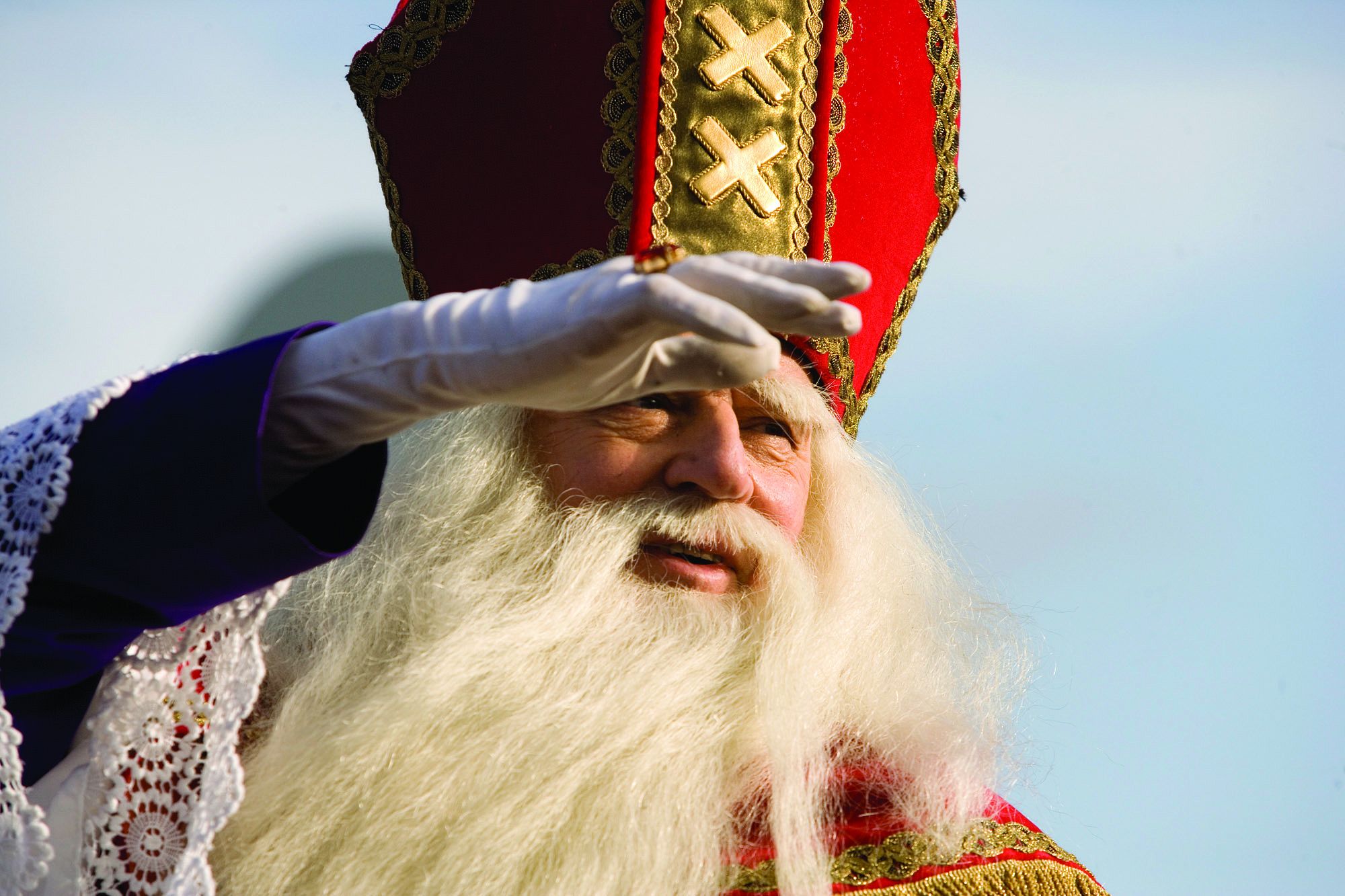Incorporated into the afternoon’s entertainment at the Prometheus Sinterklaas party last week, was the presentation of a short film documenting Sinterklaas’s visit the Faculty of Industrial Design (IO). Here he enjoyed learning about developments creating during the year, like Baxter the Robot.
For international students and staff members new to the Netherlands, the story behind the celebrations is now briefly recapitulated. First, Sinterklaas should not to be mistaken for Santa Claus (the man in the red pant suit) who arrives on December 25.
Every November Sinterklaas, the man in the red robe with a long white beard, travels by boat to the
Netherlands from his Spanish homeland. He rides into town squares on his horse Amerigo and is welcomed by millions of children throughout the country, many dressed in colourful costumes, frizzy black wigs, and black face-paint, all emulating Zwarte Piet (literally ‘Black Pete’), a collective name for the trusty band of helpers who constantly accompany
Sinterklaas
Until his departure on December 6, Sinterklaas delights children with the giving of sweets and toys often hidden in their shoes. The climax of his visit is Pakjesavond (December 5) or Sinterklaasavond, a night traditionally celebrated by families coming together to feast on sweet treats, including chocolate letters, marzipan and pepernoten, – and to give gifts personalised with poems written about the gift recipient.
Zwarte piet-discussion
In the past decade Zwarte Piet has become the focus of international attention. His detractors argue that the character of Zwarte Piet is based on racial stereotypes dating back to the 17th century, when the VOC ruled the seas and the Dutch traded in spices and slaves. Further, they argue that the existence of Zwarte Piet prolongs the discrimination felt by the descendants of people from the former Dutch colonies.
Supporters of Zwarte Piet deny these accusations and argue that Zwarte Piet is deeply entrenched in Dutch culture, and should remain so. Some supporters argue that Zwarte Piet’s black colour is due to the fact that his face is covered in soot from climbing down chimneys when he visits children in their homes. Regardless of the Zwarte Piet debate, there is little doubt of the joy he brings children each year.
Delft blue piet
This year, Prometheus and researchers at TU Delft came up with a solution to the Zwarte Piet-problem. Opportunely caught on film during Sinterklaas’s visit to IO, was the introduction of the TU Delft Blue (Blauwe) Piet, the accidental result of two Zwarte Piets creating mischief with a 3-D printer and ending up with blue face-paint, in the blue hue of the university colours.
For both Dutch and non-Dutch adults, the Zwarte Piet debate continues. Margrite Kalverboor, Children’s Ombudsman, recently argued that the continued existence of Zwarte Piet contravened the UN rights of the child and exacerbated discrimination and bullying. Yet, many Dutch people don’t believe that this is the case, and a tradition dating back almost 700 years is proving hard to change, even with added international pressure.



Comments are closed.